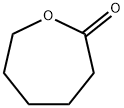Exploring ε-Caprolactone: A Versatile Monomer for the Chemical Industry
May 13,2024
Introduction
ε-Caprolactone, a pivotal chemical in the realm of polymer science, is increasingly gaining attention for its broad utility and unique properties. As the demand for high-performance polymers escalates across various industries such as automotive, healthcare, and consumer goods, the significance of ε-Caprolactone in synthetic applications is more pronounced. Understanding the fundamental aspects of ε-Caprolactone is essential for chemical professionals aiming to innovate and enhance material properties. Its versatility allows for the development of cutting-edge materials tailored to meet specific industry needs, thereby driving technological advancements and sustainability in polymer production[1].

Figure 1 Characteristics of ε-Caprolactone
Properties
ε-Caprolactone is a colorless, oily liquid that boasts a low melting point and a distinctive odor. It is categorized as a lactone or a cyclic ester, which underscores its ability to participate in ring-opening polymerization. This chemical is particularly noted for its excellent solubility in most organic solvents and its relatively high reactivity, making it an ideal candidate for synthesizing polyesters and polyurethanes. Additionally, ε-Caprolactone's stable nature under normal conditions and its ability to form polymers with both high thermal and mechanical stability are noteworthy.
Composition
The molecular structure of ε-Caprolactone consists of a seven-membered ring, incorporating a ketone group linked to an oxygen in the lactone ring. This arrangement is crucial as it provides the reactive sites for polymerization. The molecular formula of ε-Caprolactone is C6H10O2, reflecting its composition of carbon, hydrogen, and oxygen, which are fundamental to its chemical behavior and versatility in various synthesis processes.
Applications
The applications of ε-Caprolactone are extensive and diverse, reflecting its adaptability across multiple sectors. In the pharmaceutical industry, it plays a pivotal role in fabricating biodegradable polymers essential for controlled drug release technologies. This application is particularly important in developing long-acting therapeutic agents that improve patient compliance and drug administration efficiency. In biomedicine, ε-Caprolactone-derived polymers are critical in creating surgical sutures, implants, and scaffolds for tissue engineering. Their biocompatibility and tailored degradation rates allow for integration with body tissues, promoting healing and reducing the risk of infection or rejection.
Furthermore, ε-Caprolactone is utilized in the manufacture of specialty polyurethanes that are used in coatings, adhesives, and sealants. These products benefit from their enhanced durability and resistance to environmental factors, making them ideal for use in harsh conditions and applications requiring long-lasting material integrity. The electronics industry leverages these polymers for their excellent insulating properties and components that demand precise mechanical strength and thermal stability, such as in high-performance cables and protective casings[2].
Additionally, ε-Caprolactone’s role extends into more niche markets, including the production of high-quality polyurethane fibers used in textiles and the automotive industry for interior fabrics that require a combination of comfort, durability, and resistance to wear and tear. The versatility of ε-Caprolactone enhances its importance as a cornerstone in the development of advanced materials that cater to the evolving needs of modern technology and sustainable practices.
Storage Methods
Storing ε-Caprolactone requires careful consideration to maintain its stability and prevent any hazardous conditions. It should be stored in a cool, dry place away from direct sunlight and heat sources. Containers of ε-Caprolactone must be tightly sealed to avoid moisture ingress and contamination, which can trigger unwanted polymerization. Furthermore, it is essential to store this chemical away from oxidizing agents and bases to prevent reactions that could lead to decomposition or hazardous by-products.
Conclusion
As industries continue to evolve, the role of ε-Caprolactone as a foundational material in the synthesis of high-performance polymers is increasingly vital. Its unique properties and broad applicability underscore its significance in advancing material sciences and meeting the growing demands for sustainable and versatile chemical solutions. For professionals in the chemical industry, staying informed about ε-Caprolactone is not just about understanding a single chemical but about envisioning the future of polymers and their transformative impact on technology and society[3].
References
[1]Arbaoui A, Redshaw C. Metal catalysts for ε-caprolactone polymerization [J]. Polymer Chemistry, 2010, 1(6): 801-826.
[2]Azimi B, Nourpanah P, Rabiee M, et al. Poly (∊-caprolactone) fiber: an overview[J]. Journal of Engineered Fibers and Fabrics, 2014, 9(3): 15589201400900309.
[3]Sinha V R, Bansal K, Kaushik R, et al. Poly-ϵ-caprolactone microspheres and nanospheres: an overview[J]. International journal of pharmaceutics, 2004, 278(1): 1-23.
References
[1]Arbaoui A, Redshaw C. Metal catalysts for ε-caprolactone polymerization [J]. Polymer Chemistry, 2010, 1(6): 801-826.
[2]Azimi B, Nourpanah P, Rabiee M, et al. Poly (?-caprolactone) fiber: an overview[J]. Journal of Engineered Fibers and Fabrics, 2014, 9(3): 15589201400900309.
[3]Sinha V R, Bansal K, Kaushik R, et al. Poly-?-caprolactone microspheres and nanospheres: an overview[J]. International journal of pharmaceutics, 2004, 278(1): 1-23.
- Related articles
- Related Qustion
- ε-Caprolactone-based craft copolymers: synthesis and applications in the biomedical field Sep 15, 2023
ε-Caprolactone-based graft copolymers are high-performance plastics with excellent properties used in drug delivery systems and vaccines, offering controlled release and improved immune responses.
- What is ε-Caprolactone?Uses_Chemical reaction_Safety Sep 30, 2020
ε-Caprolactone or simply caprolactone is a lactone (a cyclic ester) possessing a seven-membered ring. Its name is derived from caproic acid. This colorless liquid is miscible with most organic solvents and water.
Recent advancements allow biosynthesis of 1,3-butadiene from glucose in microorganisms, pivotal for synthetic rubber production, enhancing sustainability.....
May 13,2024APIFenbendazole, a benzimidazole anthelmintic, is extensively used in veterinary medicine for the treatment of parasitic infections.....
May 13,2024APIε-Caprolactone
502-44-3You may like
- ε-Caprolactone
-

- $0.00 / 1kg
- 2024-05-22
- CAS:502-44-3
- Min. Order: 1kg
- Purity: 0.99
- Supply Ability: 200000
- 6-Hexanolactone
-

- $1.00 / 1KG
- 2024-04-25
- CAS:502-44-3
- Min. Order: 1KG
- Purity: 99.91%
- Supply Ability: 200000
- ε-Caprolactone
-

- $35.00 / 1kg
- 2024-03-27
- CAS:502-44-3
- Min. Order: 1kg
- Purity: 99%
- Supply Ability: g-kg-tons, free sample is available




